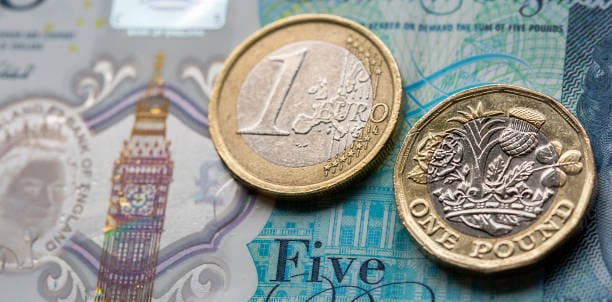GBP/EUR exchange rate week review: pound rises against euro after Trump win and BoE rate cut
04/11/2024 to 08/11/2024: The pound euro (GBP/EUR) exchange rate was boosted by Donald Trump's comprehensive win and cautious Bank of England rhetoric about the future pace of interest rate cuts.

Monday
The pound euro (GBP/EUR) exchange rate dipped below €1.19 after the Eurozone’s finalised manufacturing PMI for October printed above market analysts’ expectations at 46, up from 45 the previous month. Despite remaining in the contraction zone, it rose closer to the 50 threshold that signals expansion.
However, it was an under-pressure dollar, which was feeling the weight of the upcoming presidential election and Fed interest rate decision, that supported the euro due to its negative trading relationship with the US currency.
The pound was kept afloat by investor hopes that the budget could reduce the pace of Bank of England (BoE) interest rate cuts by fuelling inflation.
Tuesday
The pound edged above €1.19 following the publication of the UK services PMI for October which showed the sector edged further into expansion territory (a reading above 50). However, it posted the weakest rise since November last year, putting a lid on the pound’s gains.
The UK currency’s upside was also limited by the British Retail Consortium (BRC)-KPMG Retail Sales Monitor, which showed British retailers experienced a disappointing October amid pre-budget uncertainty.
Wednesday
Donald Trump swept to victory in the US election after winning several crucial battleground states, becoming the 47th president. His decisive win propelled the pound above €1.20.
Trump’s triumph left the euro trading on the backfoot amid concerns that his 10% global import tariff could damage the Eurozone economy, which is heavily dependent on the US as its single largest trading partner.
Contact a currency specialist to discover how they can help you take control of exchange rates.
Thursday
The BoE’s Monetary Policy Committee voted 8-1 to lower interest rates by 25 basis points to 4.75% - a widely expected move that was baked into markets. It was the accompanying commentary indicating that the central bank will maintain a cautious approach to cutting rates that lifted the pound to a nine-day high of around €1.203.
With rates now expected to remain higher for longer, bets on a follow-up cut on 19 December have been scaled back.
The pound’s gains were tempered by Eurozone retail sales which rose for a third straight month in September, giving the single currency some support.
The volume of retail trade across the bloc was 0.5% higher than the previous month, when sales jumped by a revised 1.1%, and exceeded forecasts for an increase of 0.4%. Compared with September last year, overall retail sales were 2.9% higher, up from a revised 2.4% annual gain in August – the highest rate of year-on-year growth since April 2022.
Friday
The pound euro rate was trapped in a narrow range amid an absence of macroeconomic data from either side.
The UK currency was kept afloat by confirmation of the diverging monetary policy outlook in the UK and Eurozone. The BoE’s hawkish leaning rhetoric on Thursday cemented expectations that the UK central bank will lower interest rates more gradually than the European Central Bank (ECB).
The pound euro rate ended the week at €1.205.
Looking ahead
UK unemployment figures for September hit the headlines on Monday. Last month’s stats revealed a surprise drop in the unemployment rate, from 4.1% to 4%. If a further decline is recorded, the BoE might double down on its cautious approach to cutting rates.
